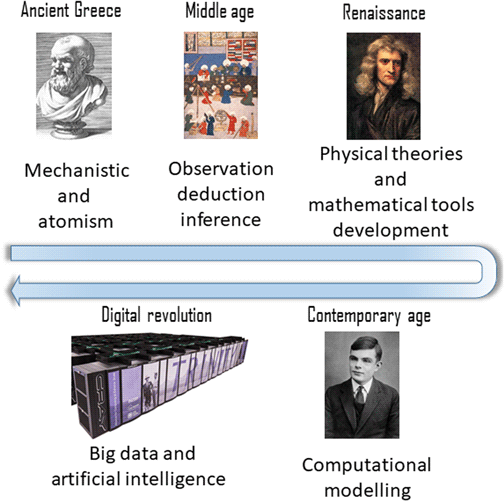Crossref Citations
This article has been cited by the following publications. This list is generated based on data provided by
Crossref.
Sahinovic, Armin
and
Geisler, Benjamin
2021.
Active learning and element-embedding approach in neural networks for infinite-layer versus perovskite oxides.
Physical Review Research,
Vol. 3,
Issue. 4,
López-López, Edgar
Bajorath, Jürgen
and
Medina-Franco, José L.
2021.
Informatics for Chemistry, Biology, and Biomedical Sciences.
Journal of Chemical Information and Modeling,
Vol. 61,
Issue. 1,
p.
26.
Hong, Seungbum
Liow, Chi Hao
Yuk, Jong Min
Byon, Hye Ryung
Yang, Yongsoo
Cho, EunAe
Yeom, Jiwon
Park, Gun
Kang, Hyeonmuk
Kim, Seunggu
Shim, Yoonsu
Na, Moony
Jeong, Chaehwa
Hwang, Gyuseong
Kim, Hongjun
Kim, Hoon
Eom, Seongmun
Cho, Seongwoo
Jun, Hosun
Lee, Yongju
Baucour, Arthur
Bang, Kihoon
Kim, Myungjoon
Yun, Seokjung
Ryu, Jeongjae
Han, Youngjoon
Jetybayeva, Albina
Choi, Pyuck-Pa
Agar, Joshua C.
Kalinin, Sergei V.
Voorhees, Peter W.
Littlewood, Peter
and
Lee, Hyuck Mo
2021.
Reducing Time to Discovery: Materials and Molecular Modeling, Imaging, Informatics, and Integration.
ACS Nano,
Vol. 15,
Issue. 3,
p.
3971.
Yoshitake, Michiko
2021.
Tool for Designing Breakthrough Discovery in Materials Science.
Materials,
Vol. 14,
Issue. 22,
p.
6946.
Song, Xinpei
Chen, Tianning
Huang, Weikang
and
Chen, Chen
2021.
Frequency-selective modulation of reflected wave fronts using a four-mode coding acoustic metasurface.
Physics Letters A,
Vol. 394,
Issue. ,
p.
127145.
Deagen, Michael E.
Brinson, L. Catherine
Vaia, Richard A.
and
Schadler, Linda S.
2022.
The materials tetrahedron has a “digital twin”.
MRS Bulletin,
Vol. 47,
Issue. 4,
p.
379.
Sahinovic, Armin
and
Geisler, Benjamin
2022.
Quantifying transfer learning synergies in infinite-layer and perovskite nitrides, oxides, and fluorides.
Journal of Physics: Condensed Matter,
Vol. 34,
Issue. 21,
p.
214003.
Zhao, Jiajun
Li, Junjie
Hu, Xiaobing
Wang, Yujian
Chen, Yiming
He, Feng
Wang, Zhijun
Zhao, Zhanglong
and
Wang, Jincheng
2022.
Establishing reduced-order process-structure linkages from phase field simulations of dendritic grain growth during solidification.
Computational Materials Science,
Vol. 214,
Issue. ,
p.
111694.
Nguyen, Danh
Tao, Lei
and
Li, Ying
2022.
Integration of Machine Learning and Coarse-Grained Molecular Simulations for Polymer Materials: Physical Understandings and Molecular Design.
Frontiers in Chemistry,
Vol. 9,
Issue. ,
Shahzad, Umer
Ghaemi Asl, Mahdi
Panait, Mirela
Sarker, Tapan
and
Apostu, Simona Andreea
2023.
Emerging interaction of artificial intelligence with basic materials and oil & gas companies: A comparative look at the Islamic vs. conventional markets.
Resources Policy,
Vol. 80,
Issue. ,
p.
103197.
Yue, Tianle
He, Jinlong
Tao, Lei
and
Li, Ying
2023.
High-Throughput Screening and Prediction of High Modulus of Resilience Polymers Using Explainable Machine Learning.
Journal of Chemical Theory and Computation,
Vol. 19,
Issue. 14,
p.
4641.
Angelis, Dimitrios
Sofos, Filippos
and
Karakasidis, Theodoros E.
2023.
Artificial Intelligence in Physical Sciences: Symbolic Regression Trends and Perspectives.
Archives of Computational Methods in Engineering,
Vol. 30,
Issue. 6,
p.
3845.
Scott-Fordsmand, Janeck J.
and
Amorim, Mónica J.B.
2023.
Using Machine Learning to make nanomaterials sustainable.
Science of The Total Environment,
Vol. 859,
Issue. ,
p.
160303.
Hatakeyama-Sato, Kan
Uchima, Yasuei
Kashikawa, Takahiro
Kimura, Koichi
and
Oyaizu, Kenichi
2023.
Extracting higher-conductivity designs for solid polymer electrolytes by quantum-inspired annealing.
RSC Advances,
Vol. 13,
Issue. 21,
p.
14651.
Chitre, Aniket
Querimit, Robert C. M.
Rihm, Simon D.
Karan, Dogancan
Zhu, Benchuan
Wang, Ke
Wang, Long
Hippalgaonkar, Kedar
and
Lapkin, Alexei A.
2024.
Accelerating Formulation Design via Machine Learning: Generating a High-throughput Shampoo Formulations Dataset.
Scientific Data,
Vol. 11,
Issue. 1,
Pore, Souvik
Banerjee, Arkaprava
and
Roy, Kunal
2024.
Application of machine learning‐based read‐across structure‐property relationship (RASPR) as a new tool for predictive modelling: Prediction of power conversion efficiency (PCE) for selected classes of organic dyes in dye‐sensitized solar cells (DSSCs).
Molecular Informatics,
Vol. 43,
Issue. 4,
Salvador, Camilo A.F.
Rego, Jessica S.
Lopes, Thiago
Meneghini, Julio R.
Brandon, Nigel P.
and
Damasceno, Daniela A.
2025.
Materials selection of non-metallic glasses for planar solid-oxide fuel cell sealants.
Ceramics International,
Vol. 51,
Issue. 6,
p.
6867.



